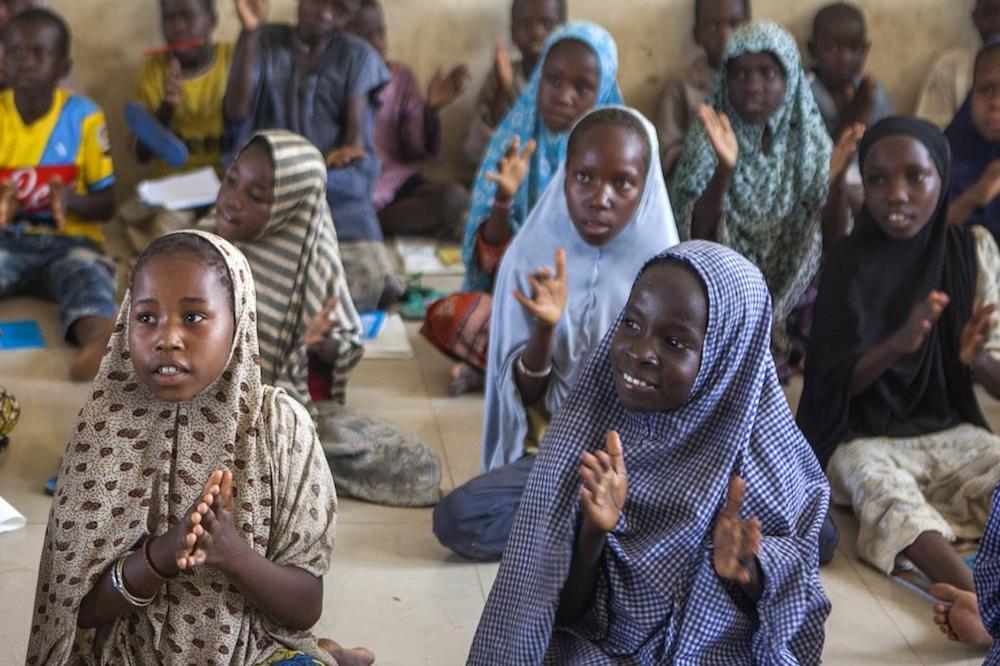
In pictures: Child labourers making clothes in squalid Bangladesh factories
Child labour
A young girl garment worker Picture: Claudio Montesano Casillas/REX Shutterstock
These pictures show the shocking reality of children working at informal factories in Bangladesh.
They should be getting an education to help them out of poverty. Instead, photographer Claudio Montesano Casillas found youngsters producing garments in horrendous conditions inside buildings without emergency exits, fire safety plans or extinguishers.
Young boys at their work station Picture: Claudio Montesano Casillas/REX Shutterstock
He said: “Inside these factories, garment workers work six to six and a half days per week, from dawn till far after dusk, for a minimum wage.
“They sleep inside or rent rooms next to these factories. They come from villages to cities seeking employment and dreaming of a better life.”
An informal garment factory in Dhaka Picture: Claudio Montesano Casillas/REX Shutterstock
Child labour is a massive problem in Bangladesh. According to the United Nations children’s agency UNICEF, there are 3.2 million child labourers aged five to 17 – a million of them between 10 and 14.
About half of all child labourers do not go to school at all – many others miss out on big chunks of their education because they do not have time to attend classes or study at home.
A boy works on pairs of trousers Picture: Claudio Montesano Casillas:REX Shutterstock
As a result, working children on the South Asian country get stuck in low-paying, low-skilled jobs – which keeps them trapped in a cycle of poverty.
Mexican documentary photographer Claudio produced a set of pictures titled “Beyond the label”.
Boys shower inside their factory where they eat, wash and sleep Picture: Claudio Montesano Casillas:REX Shutterstock
He explained: “On my second day in Bangladesh I accidentally visited an informal factory for the first time. I engaged myself in a ‘tourist tour’ in Old Dhaka and I did not know these factories were part of it.
“The factories I saw did not correspond with my idea of a factory – a shiny, well-organised place with large-scale production.
Boy works on pairs of trousers Picture: Claudio Montesano Casillas:REX Shutterstock
“Ever since, I have been curious to know more about this underground world and have tried to portray the world beyond the label.”
Claudio said informal factories are companies not officially registered in Bangladesh which produce garments for the local and sometimes the Indian market.
Girl removes extra stitches from jeans Picture: Claudio Montesano Casillas/REX Shutterstock
He said they also make clothes for well-known and established international brands through subcontracts.
Claudio added: “A room with 15 sewing machines could be considered an informal factory in Bangladesh. The majority of workers are boys and men.

This district at Keraniganj in Dhaka host hundreds of informal factories Picture: Claudio Montesano Casillas/REX Shutterstock
“Women cannot commit to the same working hours due to their responsibilities at home and they are not allowed to sleep next to a man who is not a relative. Travelling at night is also dangerous for them.
“There are an estimated 7000 informal factories across Bangladesh and – because there are not registered – these factories are not subjected to safety controls.
A boy helps other workers Picture: Claudio Montesano Casillas/REX Shutterstock
“In fact, these factories are not subjected to the nationwide fire and buildings safety assessments.
“In most of these garment factories there are no labour inspectors and the factories receive much less attention from the international community.
An electrical panel board – most factories are at risk of fire accidents due to poor wiring and electrical safety standards Picture: Claudio Montesano Casillas/REX Shutterstock
“Many factories are non-compliant with regards to anti-child labour legislation.”
The International Labour Organization says: “There is a direct link between child labour and education.
Showroom of men’s trousers produced at an informal factory in Old Dhaka Picture: Claudio Montesano Casillas/REX Shutterstock
“Nearly 50% of primary school students drop out before they complete grade five and then gravitate towards work, adding to the number of child labourers.”
Earlier this year, the murders of several children turned the spotlight on the practice of child labour across Bangladesh.
A garment worker stands amidst children clothes – due to a lack of care facilities most young children spend their time with their mother at factories Picture: Claudio Montesano Casillas/REX Shutterstock
Public protests and condemnation from UNICEF and other international organisations followed the deaths and a growing number of other violent attacks on children.
The garment industry in Bangladesh is the second biggest in the world, employing about four million workers.
A young worker takes jeans from his factory to a wholesale shop in Old Dhaka Picture: Claudio Montesano Casillas/REX Shutterstock
More than 1100 people – most of them poor seamstresses – were killed in 2013 when the Rana Plaza commercial building in a Dhaka suburb collapsed.
Safety standards in factories were reviewed after the accident and many had to undergo structural, electrical and fire safety fixes and upgrades.
More news

